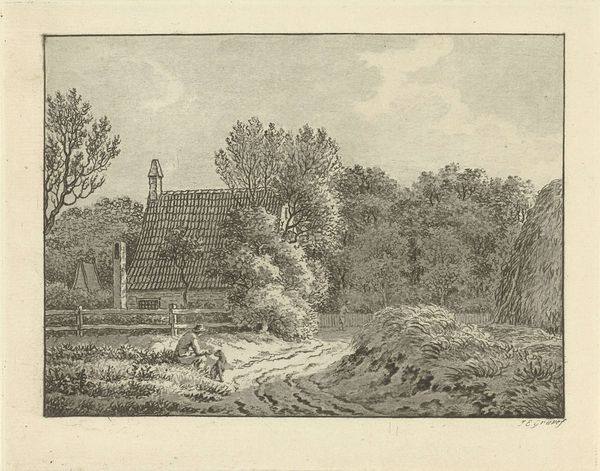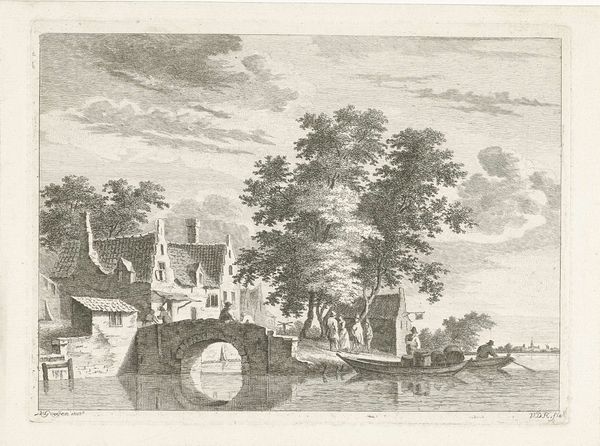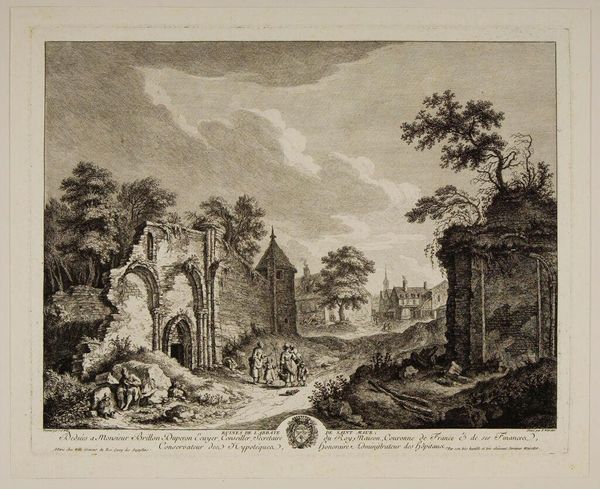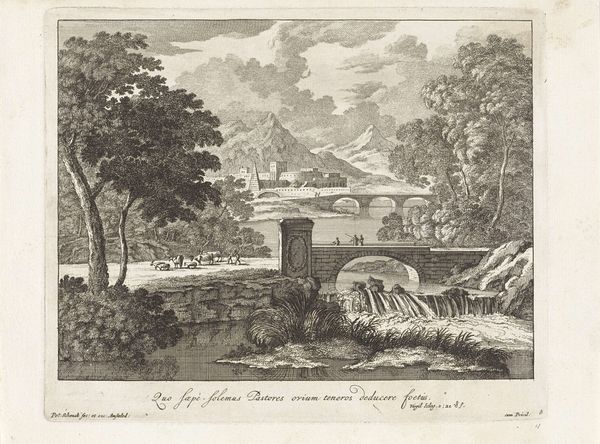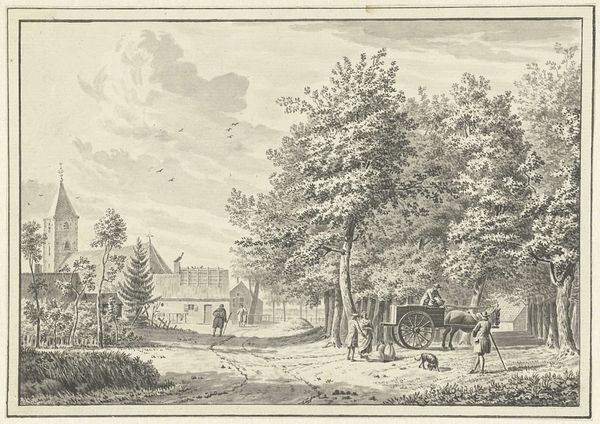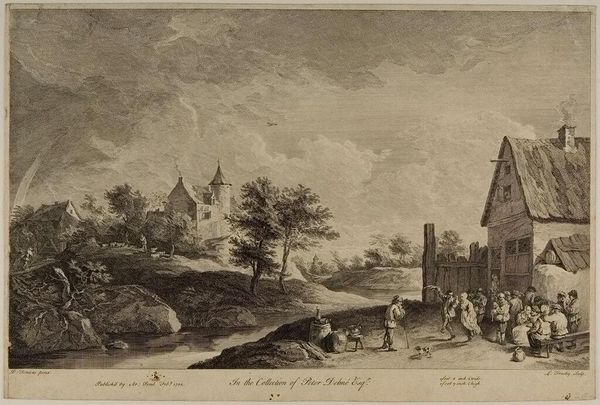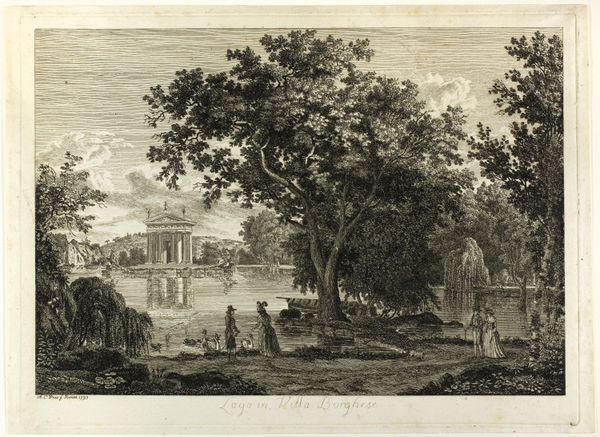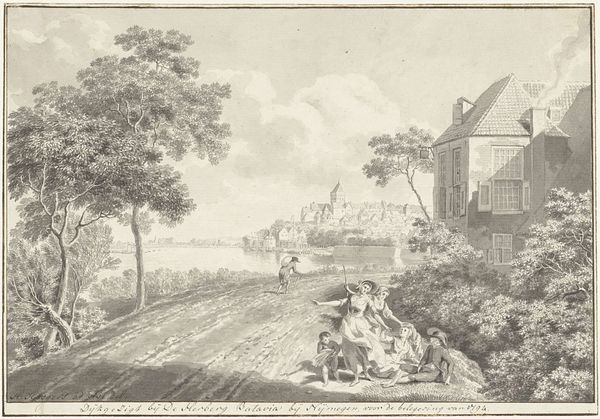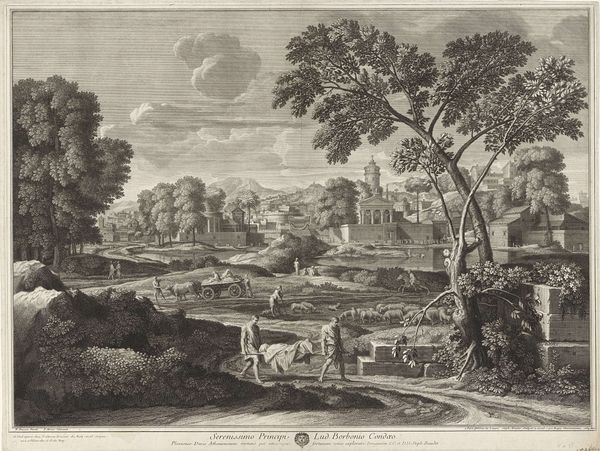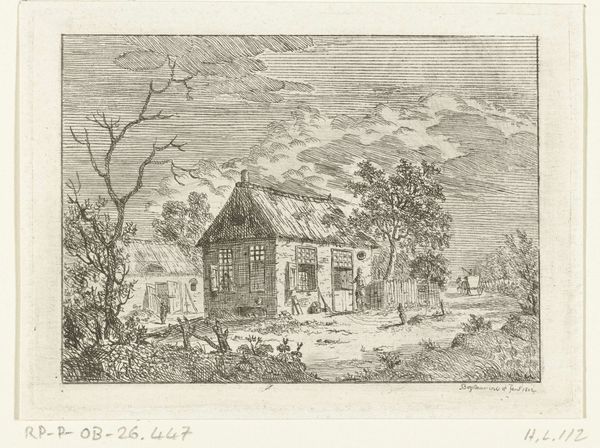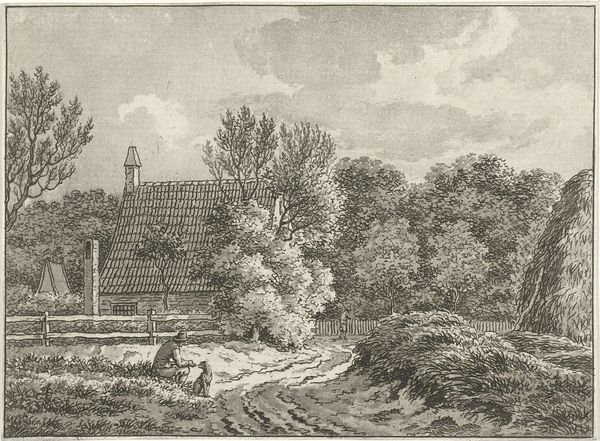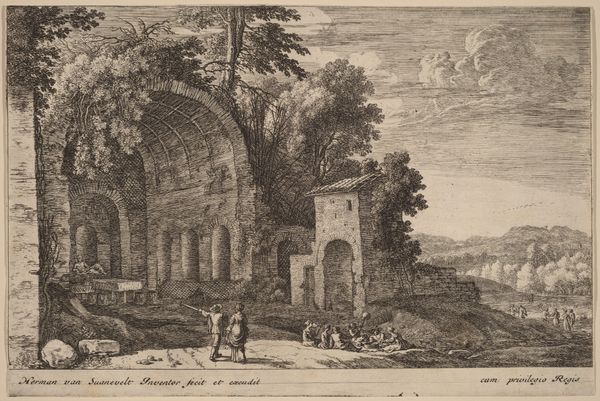
print, etching
# print
#
etching
#
landscape
#
etching
#
genre-painting
#
history-painting
Dimensions: height 157 mm, width 212 mm
Copyright: Rijks Museum: Open Domain
Editor: This is "Gezicht op Huis Zwanenburg" by Alexander Cranendoncq, dating roughly from 1809 to 1869. It’s a detailed etching, quite evocative. What immediately strikes me is how the grandeur of the estate contrasts with the everyday figures in the foreground. What's your interpretation of this work? Curator: Considering the historical context, it's interesting to see how Cranendoncq frames the Zwanenburg estate. The choice of etching, as a readily reproducible medium, suggests a desire to disseminate this image widely. Given its public accessibility, how might this image function within the visual culture of the Netherlands at the time? Editor: That’s interesting. Maybe it was to celebrate the wealthy, or to document architecture. Curator: Possibly. Think about the politics of imagery. Whose narrative does it reinforce? The meticulous detail given to the estate suggests an emphasis on its power and stability. Yet, the inclusion of common people creates a specific relationship to it, a form of viewing it from a specific position of the social classes. The landscape is almost staged to support a cultural hierarchy. How would you compare the people in the foreground with other representations of rural life from that time period? Editor: I guess there’s a kind of ownership implied – or maybe, accessibility but with boundaries. I hadn’t thought about it as a constructed narrative. Curator: Precisely. So, beyond a simple depiction, what's the artwork telling us about the relationship between power, place, and representation? Editor: Seeing it as a political image definitely changes my view. I see how even a seemingly straightforward landscape etching can be a commentary on society. Curator: Indeed. Art often operates as a reflection of its socio-political climate, subtly reinforcing or challenging prevailing norms.
Comments
No comments
Be the first to comment and join the conversation on the ultimate creative platform.
